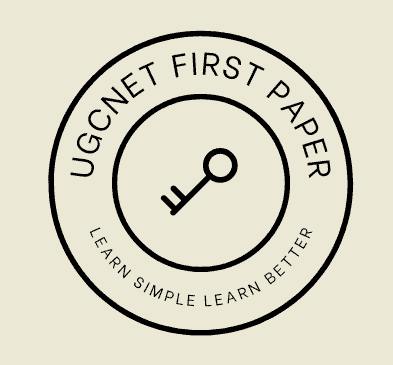(Choice Based Credit System (CBCS))
च्वाइस बेस्ड क्रेडिट सिस्टम (सीबीसीएस) उच्च शिक्षा के लिए एक अभिनव दृष्टिकोण है जो पाठ्यक्रम डिजाइन करने में लचीलापन प्रदान करता है और छात्रों को उनकी सीखने की जरूरतों, रुचियों के अनुसार अंतर-अनुशासनात्मक, अंतर-अनुशासनात्मक पाठ्यक्रम, कौशल-उन्मुख पेपर और बहुत कुछ चुनने की अनुमति देता है। 1 क्रेडिट व्याख्यान अवधि के 15 घंटे के बराबर है और इसकी गणना इसके अनुसार की जाती है इत्यादि। 2 क्रेडिट का मतलब है 2*15=30, 4 क्रेडिट *15 = सीखने के 60 घंटे इत्यादि। यहां एक संक्षिप्त अवलोकन दिया गया है:
– लचीलापन (Flexibility):
सीबीसीएस छात्रों को उन पाठ्यक्रमों के संदर्भ में एक विकल्प प्रदान करता है जिनका वे अध्ययन करना चाहते हैं। यह छात्रों को अपनी गति से सीखने और विषयों के समूह से, संभवतः किसी अन्य विषय से भी, ऐच्छिक चुनने की अनुमति देता है।
– क्रेडिट-आधारित (Credit-based) :
सिस्टम निर्देश के घंटों की संख्या और अन्य शैक्षणिक गतिविधियों के आधार पर पाठ्यक्रमों को क्रेडिट प्रदान करता है। एक विशिष्ट पाठ्यक्रम में व्याख्यान, प्रयोगशाला, ट्यूटोरियल, प्रोजेक्ट, सेमिनार और स्व-अध्ययन घटक हो सकते हैं, प्रत्येक के लिए एक विशिष्ट क्रेडिट वेटेज होता है।
– समग्र विकास (Holistic Development) :
सीबीसीएस के साथ, छात्र मुख्य विषयों, वैकल्पिक विषयों और कौशल-आधारित पाठ्यक्रमों के संतुलित मिश्रण से लाभ उठा सकते हैं, जिससे अधिक समग्र शिक्षा प्राप्त हो सकती है।
– हस्तांतरणीय क्रेडिट (Transferable Credits) :
सीबीसीएस के महत्वपूर्ण लाभों में से एक विभागों या यहां तक कि संस्थानों में क्रेडिट स्थानांतरित करने की क्षमता है। यह संस्थानों के बीच गतिशीलता और संसाधनों को साझा करने में सहायता करता है।
– मानकीकरण (Standardization) :
सीबीसीएस विश्वविद्यालयों के बीच मूल्यांकन प्रणाली और पाठ्यक्रम संरचना में एकरूपता और तुलनीयता लाने में मदद करता है, जिससे संस्थानों में छात्रों की गतिशीलता में सुविधा होती है।
– ग्रेडिंग (Grading) :
प्रतिशत के बजाय, सिस्टम अक्सर ग्रेडिंग प्रणाली का उपयोग करता है, जिसे छात्र के प्रदर्शन का अधिक सटीक प्रतिबिंब प्रदान करने वाला माना जाता है। फिर इन ग्रेडों का उपयोग प्रत्येक छात्र के लिए संचयी ग्रेड प्वाइंट औसत (सीजीपीए) की गणना करने के लिए किया जाता है।
संक्षेप में, सीबीसीएस का लक्ष्य कठोर शिक्षा प्रणाली में आमूल-चूल परिवर्तन करना, इसे अधिक छात्र-केंद्रित बनाना, उन्हें अपनी शैक्षणिक यात्रा चुनने में अधिक स्वायत्तता प्रदान करना और सीखने के लिए अधिक अंतःविषय दृष्टिकोण को बढ़ावा देना है।
Choice Based Credit System (CBCS)
The Choice Based Credit System (CBCS) is an innovative approach to higher education that provides flexibility in designing curriculum and allows students to choose inter-disciplinary, intra-disciplinary courses, skill-oriented papers, and more according to their learning needs, interests, and aptitude. Here’s a brief overview:
– Flexibility:
CBCS offers students a choice in terms of the courses they wish to study. It allows students to learn at their own pace and choose electives from a pool of subjects, potentially even from another discipline.
– Credit-based:
The system assigns credits to courses based on the number of hours of instruction and other academic activities. A typical course might have lectures, labs, tutorials, projects, seminars, and self-study components, each with a specific credit weightage.
– Holistic Development:
With CBCS, students can benefit from a balanced mix of core subjects, elective subjects, and skill-based courses, leading to a more holistic education.
– Transferable Credits:
One of the significant advantages of CBCS is the ability to transfer credits across departments or even across institutions. This aids in mobility and sharing resources between institutions.
– Standardization:
CBCS helps in bringing uniformity and comparability in the evaluation system and curriculum structure among universities, facilitating student mobility across institutions.
– Grading:
Instead of percentages, the system often uses a grading system, which is considered to provide a more accurate reflection of a student’s performance. These grades are then used to calculate a Cumulative Grade Point Average (CGPA) for each student.
In essence, CBCS aims to overhaul the rigid education system, making it more student-centric, allowing them more autonomy in choosing their academic journey, and fostering a more interdisciplinary approach to learning.
1 credit is equal to 15 hours of lecture duration and it is calculated according to it and so on. 2 credit means 2*15=30, 4 credit * 15 = 60 Hours of learning and so on.
- LIFE SCIENCES – 703 Exam Date : 01-Mar-2025 Batch : 15:00-18:00
- EARTH ATMOSPHERIC OCEAN AND PLANETARY SCIENCES – 702-Solved Paper-02-Mar-2025 Batch : 09:00-12:00
- SOLVED FIRST PAPER -CSIR UGC NET EXAM-20Q-28-FEB-25
- CSIR NET-CHEMICAL SCIENCES- FIRST PAPER-27-JUL-24-SOLVED PAPER
- CSIR NET SOLVED FIRST PAPER 28 JULY 2025
